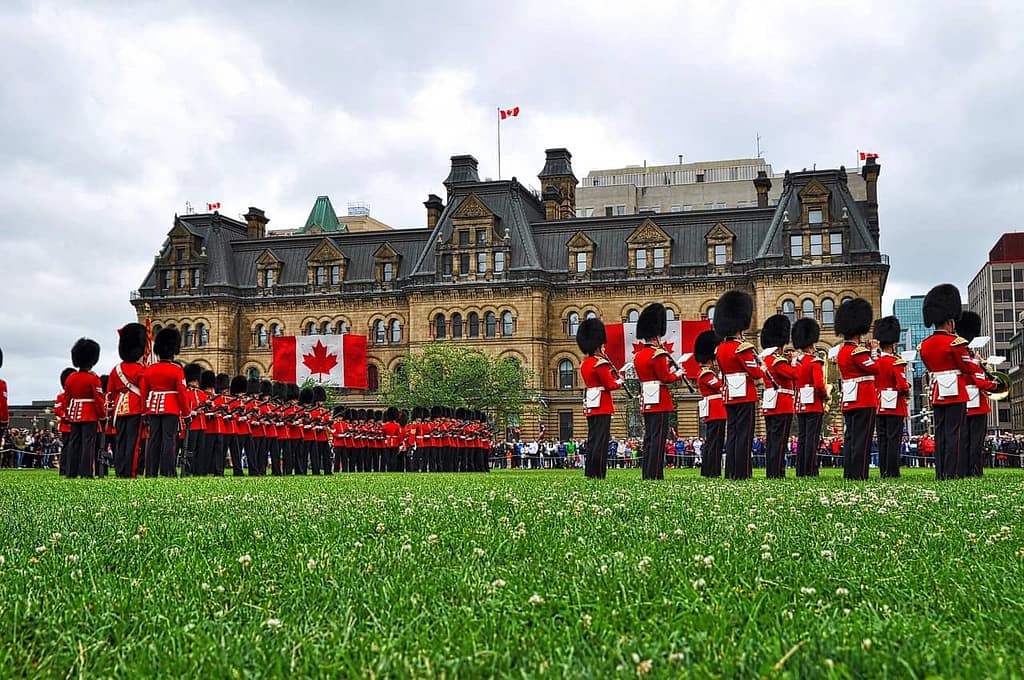OTTAWA — In a short, 20-or-so page Supreme Court brief Wednesday, the federal government struck a match and threw it into a pile of Constitutional tinder that had been accumulating for years and waiting to explode.
In its first-ever legal action in the battle against Quebec’s divisive secularism bill (Bill 21), Canada’s federal government asked the country’s top court to place limits on the use of the most controversial provision of the Charter of Rights: section 33, or the notwithstanding clause.
The measure allows a government to overrule specific Charter rights for five years, at which point the use of the power must be re-evaluated.
“This case is about more than the immediate questions before the Court. The Supreme Court’s decision will determine how both federal and provincial governments can use the notwithstanding clause for years to come,” federal Justice Minister Sean Fraser said in a statement Thursday.
Ottawa’s stance upset the provinces, which assert that the courts have no authority to limit how and when they use the notwithstanding clause.
Quebec Premier François Legault branded the federal government “hypocritical,” and his minister of justice accused Ottawa of waging a frontal assault on the provincial legislatures.
Alberta Premier Danielle Smith said she was “highly disappointed” the federal government would “jeopardize national unity” and attack a “cornerstone of our constitution.”
“(We) urge them to drop their Supreme Court appeal now,” she tweeted.
Ontario Attorney General Doug Downey and Saskatchewan Premier Scott Moe said Ottawa’s assertions were attempting to rewrite the Charter in the courts.
While the case does appear to be a one regarding the extent to which legislators can suspend certain Charter rights under section 33, in fact what is really at stake is the extent to which courts can exert power over limiting or reviewing the application of the notwithstanding clause.
It comes on the heels of mounting numbers of provinces, such as Ontario and Alberta, emulating Quebec and using the notwithstanding clause in advance in controversial bills they anticipate may violate some Charter rights.
Quebec used it in Bill 21 that prohibits certain public sector workers such as judges, police officers, teachers and prison guards from wearing religious symbols to the workplace and requires them to conduct their work with their faces uncovered.
The province used the notwithstanding clause prematurely to shield the law from the courts. The provision needs to be re-approved every five years by the Quebec legislature. It was re-approved last year.
Ontario Premier Doug Ford has invoked it twice since 2018, most recently in 2022 in hastily withdrawn back-to-work legislation against striking teachers that provoked immense union indignation.
The Alberta government is poised to invoke the clause in three outstanding bills regarding transgender people, The Canadian Press states.
An inquiry cried out by many legal scholars since Ottawa’s submissions: can the Supreme Court resist the federal government’s call to grant additional power to courts to interpret, and potentially limit, the notwithstanding clause?
The proponents of the challenge to Bill 21 — and the general pre-emptive use of section 33 — contend that the use of section 33 has long since gone beyond that of a “safety valve to be used only on rare occasions” and on “non-controversial issues.”
One of the central claims of the federal government is the view that legislators ought not to be able to continue to revive such a law that limits some Charter rights to the point that those rights are abated “beyond recognition” and trimmed to mere “legal fictions.”.
The government’s factum describes it in analogy to a lightbulb: turn off a lightbulb (or a Charter right) for a short period of time (here, five years) and it will likely burn just as well when you turn it back on. Turn off the bulb for many years (such as consecutive five-year stints) and it never might light again.
Ottawa also claimed that courts must remain capable of determining whether legislation infringes Charter rights even if it contains the notwithstanding clause. Even if it cannot invalidate the law, the court provides notice to citizens and legislators of the consequences of legislation, it claimed.
In its reply factum, the Quebec government cites a 2005 Supreme Court decision in arguing that “only electors can debate the wisdom and value of legislative decisions.”
The province also told the court that section 33 is a “cornerstone” of the Charter because provinces had thought of it as a guarantee that Parliaments still had legislative supremacy over courts. Section 33, without which there would never have been a Charter of Rights, must hence be made accessible to provinces in order for them to exercise it, it added.
“Nothing prevents provinces from passing legislation to protect public interests such as morality or fundamental social values,” Quebec’s factum says.
Similarly, the Manitoba government claimed before the Court this week that “granting democratically elected legislators the final say on some rights and freedoms through the notwithstanding clause was viewed as being central to the legitimacy of entrenching Charter rights and judicial review of legislations.”
But Manitoba agreed with the federal government that the courts would still be permitted to decide whether laws invoking the notwithstanding clause violate Charter rights suspended by section 33.
Saying that the case has attracted a lot of attention is an understatement. This summer, the Supreme Court gave a record number of interveners in the case. The highly anticipated hearings have yet to be scheduled.
Some commentators this week called up the ghost of a constitutional crisis if the Supreme Court renders a decision consistent with the federal government’s argument. If the nation’s top court decides to limit section 33’s applications, will the provinces obey? And if not, then so what?

